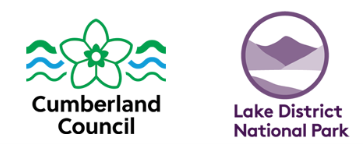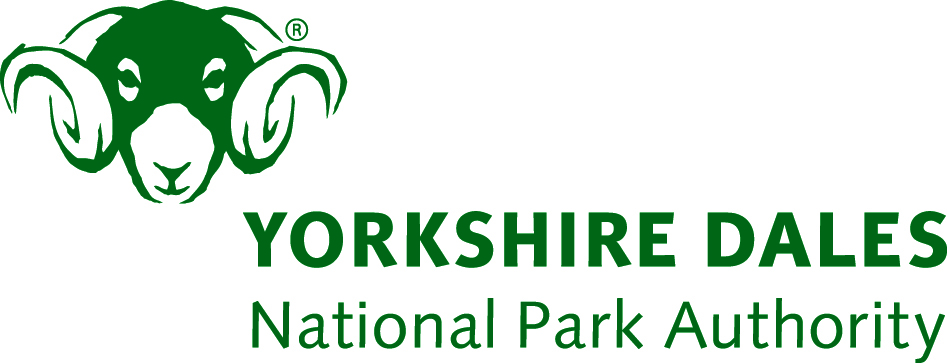
Land at Storms Estate currently being assessed for Nutrient Neutrality and Biodiversity Net Gain



We are always on the lookout for potential mitigation sites for inclusion within our local authority led mitigation schemes. Sites can be assessed for Biodiversity Net Gain and for Nutrient Neutrality. We also offer guidance for those with freestanding mitigation sites to smooth the process of delivering solutions.
It is now a legal requirement under the Environment Act for developers to provide at least a 10% net gain in biodiversity. The aim of Biodiversity Net Gain is to ensure that habitats for nature are in a better state than they were before development. Not all Biodiversity Net Gain can be provided on the development site hence why we are looking for potential mitigation sites. More information can be found at Biodiversity Net Gain : Lake District National Park
Developers are also legally required to offset their nutrient outputs in critical catchment areas. There are five protected Habitat Sites within Cumbria that are in an unfavourable condition due to phosphorous pollution.
We are seeking sites within four of these catchment areas (see maps below) where projects could be delivered to reduce the amount of phosphorous entering the site. More information can be found at Nutrient Neutrality North West : Lake District National Park
Biodiversity Net Gain
All Local Planning Authorities across Cumbria are looking for sites within the county that could be used to create biodiversity net gain habitats. Biodiversity Net Gain sites must be retained in that use for a period of 30 years. Managing a site for Biodiversity Net Gain could therefore become an additional income stream for landowners, with the change in land use and future maintenance funded by Biodiversity Net Gain unit sales alongside other activity such as agriculture. We are accepting sites from across the county on behalf of other local planning authorities which will be forwarded to the relevant authority to be assessed.
Examples of what Biodiversity Net Gain on a site could look like include the creation of new woodland, wood pasture and hay meadows, or changes in management to improve species rich grasslands or hedgerows.
For more information on Biodiversity Net Gain, please see the following documents:
Please note this is a new funding option which may or may not prevent you from receiving funding from other schemes. Therefore when assessing expressions of interest, we will work closely with the landowner to ensure that projects are not double funded, which may lead to exclusion from the process as shown in Appendix 1 of the EOI form.
Nutrient Neutrality
Within the catchment areas identified we are seeking sites with potential for a range of mitigation solutions. Due to the United Utilities commitments of improving multiple Wastewater Treatment works through TAL improvements in 2030, the solutions we are seeking can be short term (up to 2030) or long term. Examples of long-term nature-based solutions include wetland creation, Riparian buffers creation, and creation of slit traps/leaky dams. Shorter term solutions include changes to cover crops and land use changes. The partnership (Lake District National Park Authority, Westmorland and Furness council, and Cumberland Council) are working together to identify funding opportunities to deliver appropriate projects.
We are accepting sites from across all of the catchment areas on behalf of other local planning authorities, which will be assessed by the Lake District National Park Authority then forwarded to the relevant authority. The catchment areas are as follows:
Maps showing the boundaries of each are available here below (scroll through the maps):
Please note the Kent catchment area has changed recently.
Biodiversity Net Gain
Biodiversity Net Gain sites are assessed by the relevant Local Planning Authority. If the site is suitable our officers will work closely with the landowners to ensure the most beneficial solution can be carried out. The officers have knowledge and guidance to advise landowners through the process.
All sites submitted for Biodiversity Net Gain will be reviewed against the exclusion criteria set out in Appendix 1 of the expression of interest form. Those sites that are excluded will be taken no further at this stage. All remaining sites will be assessed against a list of basic criteria by Council Officers; this will be based on current guidance available at the time.
Not all sites will be taken forward, this decision will be made based on the data available and the suitability of the site for the intended use. We are particularly looking for those sites that could provide multiple benefits such as those that provide flood risk reduction and/or recreational benefits while supporting farm diversification.
Nutrient Neutrality
Nutrient Neutrality sites are assessed initially by a high-level triage carried out by either Local Planning Officers and by Local Natural England Officers. Those sites that are deemed to have no potential will be taken no further at this stage. Once the site is assessed and deemed to have potential it may be put forward for a pre-feasibility assessment, subject to funding. At this stage no commitment is needed from landowner. A full feasibility assessment is the final stage before solutions can be started, providing the necessary permits/permissions are in place. Not all sites will be taken forward, this decision will be made based on the data available and the suitability of the site for the intended use.
How is the site secured?
The site is secured through entering into a legal agreement between the landowners and the Local Planning Authority.
As previously stated, long term biodiversity net gain agreements last 30 years.
For nutrient neutrality, there are two types of agreements: short-term agreements will secure the site until 2030, whilst long-term agreements secure the site for 80 years.
We are in the process of updating our online form to ensure there is always an opportunity to express interest.
In the meantime please contact the relevant teams directly
Nick.Hall@lakedistrict.gov.uk
nutrients@lakedistrict.gov.uk
Completed forms and additional queries should be sent to nature.recovery@Lakedistrict.gov.uk.
Hard copies can be sent to:
Lake District National Park Authority
Wayfaring House
Murley Moss Business Park
Oxenholme Road
Kendal
LA9 7RL
This is a public call for sites meaning that anyone who owns, or has an interest in land, can put sites forward for consideration. Submitting an expression of interest (EOI) only indicates your interest at this stage and does not commit you to take any further action or bind you into any legal agreement with the Authority or their partners.
Note: The Lake District National Park Authority is coordinating this exercise on behalf of all the Cumbrian Local Planning Authorities. The expressions of interest for BNG can relate to land throughout the county, whilst NN is restricted to the catchment area.
By submitting your details, you consent to them being shared with officers from LDNPA, Cumberland Council, Westmorland & Furness Council or Yorkshire Dales National Park Authority (dependent on the location of the site) as well as third-party contractors* acting on behalf of the relevant Authority for the purposes of the project. The information shared will enable LDNPA and partners to assess the site’s eligibility for Nutrient Neutrality.
*Where your information is to be shared with a third party acting on behalf of the authorities listed above we will contact you with their full details.Your data will be stored in the relevant Authority's records until it becomes irrelevant to the project.
All submissions will receive and acknowledgement email/letter to say the form has been received and further communications can begin if the site is suitable to be taken forward.
The Cumbrian authorities are working together to produce guidance for free standing mitigation sites. These sites are not connected to a development or a mitigation scheme.
Guidance Document: Coming soon
Further Information:
For further information on the call for sites, phosphorous pollution, BNG or Habitat Site restoration please contact: Nature.recovery@Lakedistrict.gov.uk or Tel: 07775116219 or 07825 456453
For further information on BNG and the planning process please contact the relevant authority:
Cumberland Council: https://www.cumberland.gov.uk/planning-and-building-control
Lake District National Park Authority: https://www.lakedistrict.gov.uk/planning/planning-for-nature-recovery/biodiversity-gain-plan
Westmorland and Furness Council: https://www.westmorlandandfurness.gov.uk/planning-and-building-control
Yorkshire Dales National Park: https://www.yorkshiredales.org.uk/planning/applying-for-planning-permission/biodiversity-net-gain-bng/
Cumberland Council:
Web: https://www.cumberland.gov.uk/planning-and-building-control
Email (Allerdale area) planning@allerdale.gov.uk
Email (Carlisle area) EDA@cumberland.gov.uk
Email (Copeland area)Development.Control3@cumberland.gov.uk
Lake District National Park Authority:
Web: https://www.lakedistrict.gov.uk/planning/planning-for-nature-recovery/biodiversity-gain-plan
Email: Planning@lakedistrict.gov.uk
Westmorland and Furness Council:
Web: https://www.westmorlandandfurness.gov.uk/planning-and-building-control
Email: Planning2@westmorlandandfurness.gov.uk
Yorkshire Dales National Park: